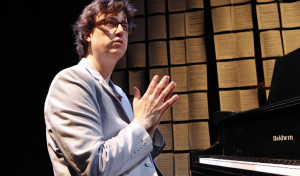“Idon’t do scales,” Hector Rodriguez, a talented student of adult piano lessons, confided to me when I profiled him for GRAND PIANO PASSION™. “I don’t want to waste time on them.”
In contrast, the amateur pianist Perri Knize (her book, Grand Obsession, is my October selection) set aside her advanced-intermediate repertoire several years ago to tackle the building blocks of pianism: technique, theory, sight-reading, and rhythm. Now she is back to the repertoire she left behind but with a much deeper foundation. She looks forward to playing repertoire previously beyond her grasp.
In my personal experience, among students of adult piano lessons, for every Perri in the population there exist at least eight of Hector. Who wants to labor over music that can feel inane, all the while fuming over the missed opportunity of Chopin’s melodies or Debussy’s harmonies? Over the past five years, I have oscillated between these two poles represented by Perri and Hector, first resolving to improve my piano technique, then casting aside practice music to savor the repertoire I’m capable of playing.
Then my piano teacher, Stephen Wu, introduced me to Burgmüller’s Opus 109, 18 Characteristic Studies for the Piano.
Opus 109 (as well as its preceding book, Burgmüller Opus 100) is practice music disguised as repertoire. Each piece in the book tackles several elements of piano technique, woven within music that I find ranges from tolerably good to movingly beautiful. Although I am still working through the book, thus far my favorite piece is The Pearls.
In Pearls, scales flutter up two octaves, with an asynchronous repeat in the middle. Later, the scales tumble downwards, with the same rhythmic blip. To my mind, Burgmüller must have given the work its title because the music evokes a broken strand of pearls clattering to the floor, bead by bead. Written in the key of G major, Pearls is to be played leggierissimo, one of those delicious Italian musical terms, that means very lightly. The changes in dynamics from the opening pianissimo up to mezzo forte and back down to piano gave me the chance to inject the music with excitement.
When I studied The Pearls, I found that the music felt good for the muscles in my hands in the same way that bench-pressing free weights at the YMCA feels good for my pectorals. While I pulsed notes, I almost could feel my fingers becoming more agile. The music gave me the opportunity to work on my extended pinky, a problem that has abated but nonetheless crops up from time to time. I practiced The Pearls at an ultra-slow pace, all the while focusing on keeping my pinky relaxed until its turn arrived to strike a note.
I recently emailed Hector to let him know I planned to mention his “no-scales” approach for this article on piano technique. He wrote back: “At times I wonder whether learning scales and other techniques will help my piano playing. Who knows, I may follow in Perri’s footsteps.”




I can’t wait to dive in! I think my 2 year absence without a piano has made me a more patient pianist. Back to (lovely) basics!
Looking forward to hearing how it goes. Very exciting that you are reclaiming your love for the piano.